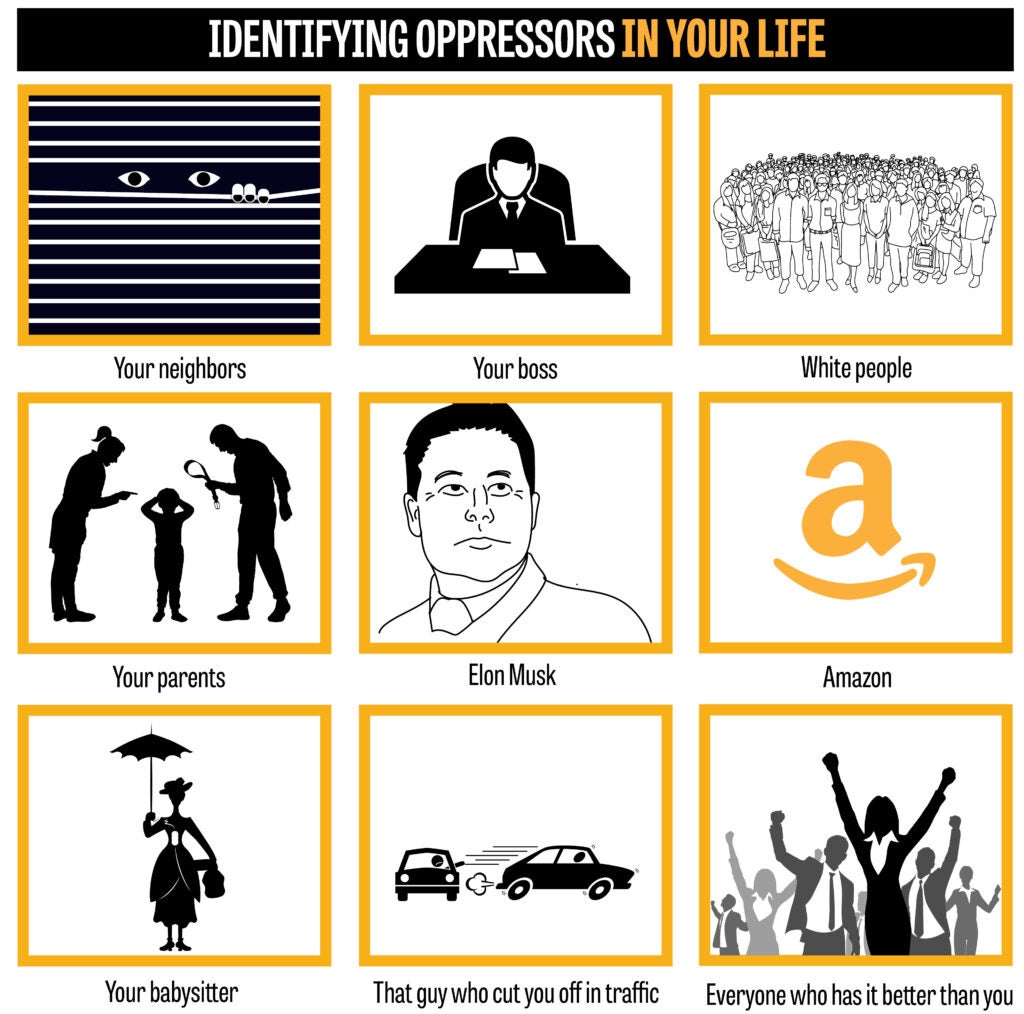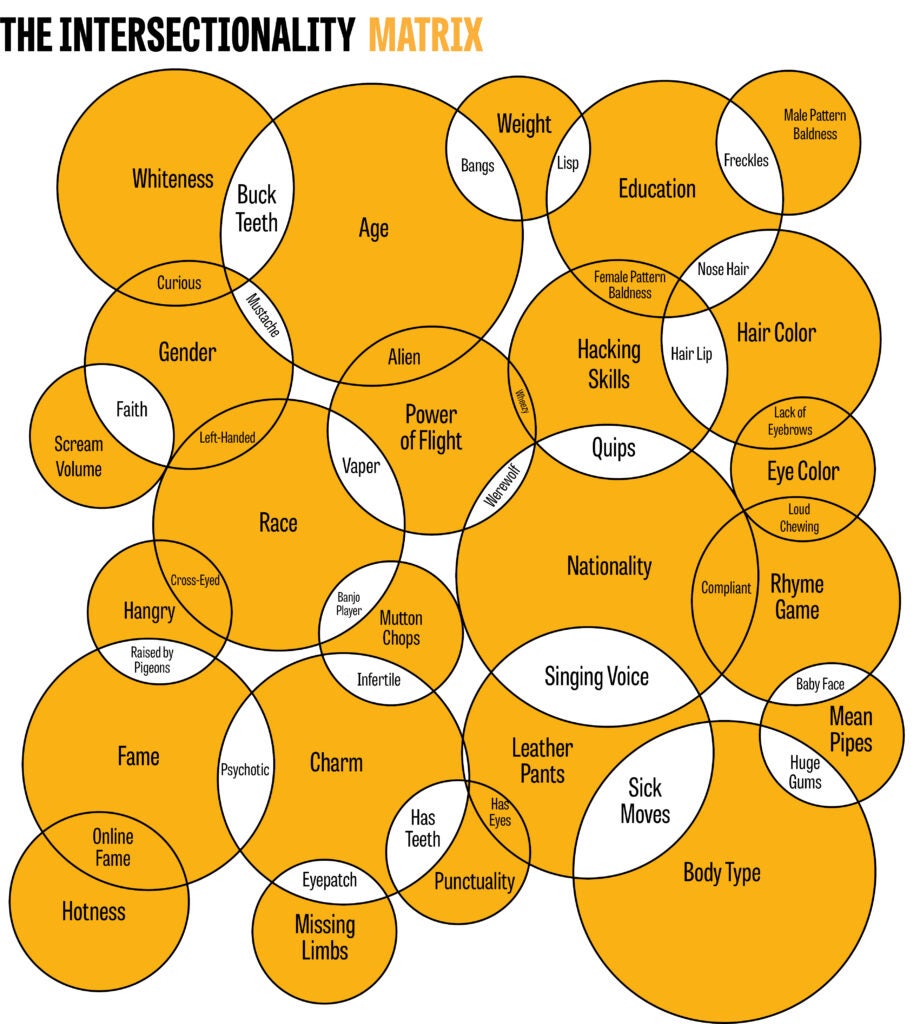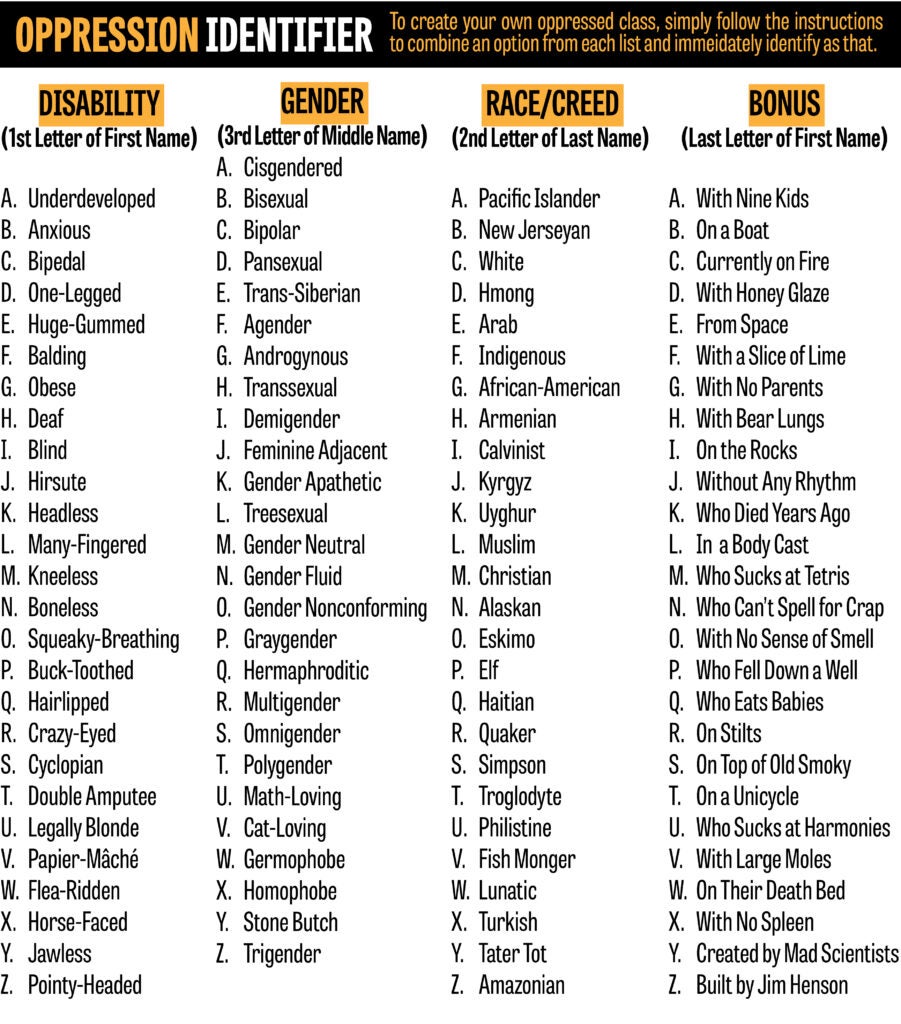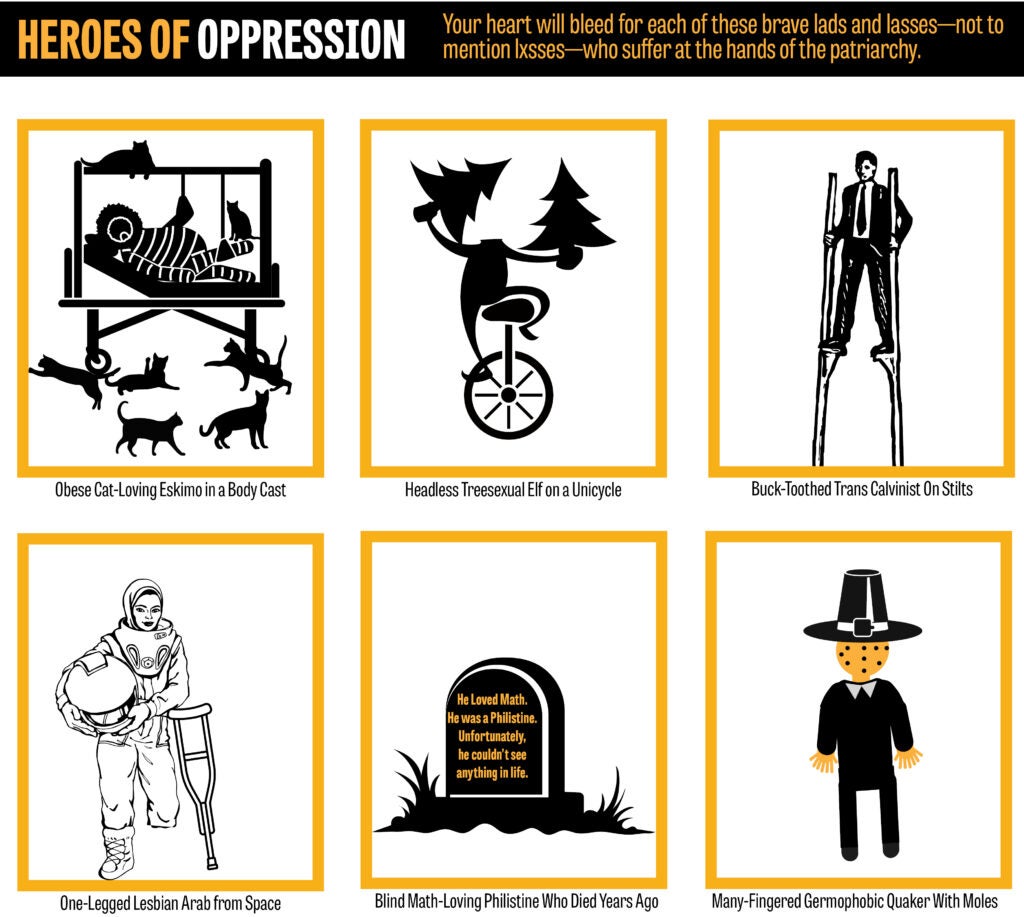‘The Babylon Bee Guide to Wokeness’: Understanding Intersectionality and Identity
The Babylon Bee /
The satire site The Babylon Bee presents “The Babylon Bee Guide to Wokeness,” a tongue-in-cheek guide to the far left’s obsession with intersectional insanity. You can order a copy here. Below is an excerpt from the first chapter.
Intersectionality and Identity
Let’s get started, class. Check your privilege at the door, because it’s time for you to learn about intersectionality.
We know it sounds like a made-up word, and that’s because it is. We just made it up, like, a few years ago, because the races and classes were starting to get along and we needed something to break up all that peace and harmony and introduce some good, old-fashioned, Marxist class warfare.
Intersectionality is a concept wherein you can add oppression points to yourself for every oppressed identity you can even remotely identify with. Even if it’s a stretch. The game, then, here in Wokeland is to find as many of these identities as possible and apply these labels to yourself so you can feel righteous—and so you can get more money from the government and blame everyone else for your problems.
In olden times, like back in 2009, if you had problems in your life, you’d think hard about the choices that led you to that low point. Then, you’d change your approach to life. Maybe you’d change your worldview, or go get a new job, or work harder. You’d apologize to other people for the way you’d behaved. Then, you’d dust yourself off and go out into the cold, unforgiving world and give it another go.
This approach is decidedly not woke.
It’s important to remember that your problems are not your fault. They are the fault of the oppressor class. Your parents? Oppressors. Your teachers? Oppressors. People with a different skin color than you? Oppressors. Anyone who disagrees with your woke worldview? You guessed it. Oppressors.

The Intersectionality Matrix
Humans are varied. Some are old, some are fat, some are from Kentucky, and others are from Kenya. Some can touch the tip of their nose with their tongue, and others can flatulate on command. We all have intersections of privileges and disadvantages. The point is not to see each of us as unique individuals, but to parse all of humanity into groups based on these obscure and often meaningless attributes so that a new minority group can be created.

So, to solve the problem of who’s an innocent victim and who’s a perpetrator of evil white supremacy, we came up with the intersectionality matrix. You want to land on as many intersections of oppression as possible.
Here are just a few examples of some oppressed identities you can select:

Examples of Oppressed Classes
Still not quite sure how this all works? That’s OK. You’re new at this. We’re going to give you some examples of oppressed intersectional classes you can choose from. Just remember, you can be any oppressed identity you want, as long as you try hard and believe in yourself.
Remember how Elsa in “Frozen” didn’t listen to her family and friends and just decided to BE HERSELF? That’s what you need to do: just let it go. Sure, Elsa almost mass-murdered her entire kingdom by covering it with an ice storm and nearly stabbed her sister in the heart with an icicle, but hey! She was LIVING HER TRUTH.
Or remember how Ariel didn’t listen to her dad—a mean, patriarchal ruler who wanted her to be oppressed as a wealthy, influential mermaid princess for the rest of her life? Yes, she almost got herself and her entire kingdom turned into those little weird goblin things growing in the Sea Witch’s lair, and her dad and the prince had to come rescue her, but still! She wasn’t going to listen to any mean old patriarch!
You need to be just like these Disney princesses. Live your truth. Be like one of these stunning and brave heroes of oppression:

The Daily Signal publishes a variety of perspectives. Nothing written here is to be construed as representing the views of The Heritage Foundation.
Have an opinion about this article? To sound off, please email [email protected] and we’ll consider publishing your edited remarks in our regular “We Hear You” feature. Remember to include the URL or headline of the article plus your name and town and/or state.
